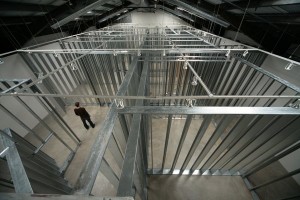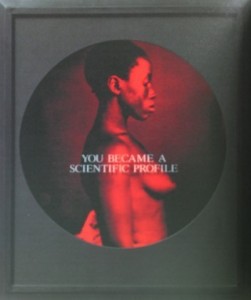In the last two parts of this series on technology in the museum and the role of the Kunsthalle, we talked about the issues facing museums today as art and audiences both change to incorporate new media and a greater interest in interactive experience. Today I’d like to talk specifically about the Kunsthalle. As I mentioned in the first post on this topic, we are lucky in Los Angeles to have a lovely example of this non-collecting type of museum, the Santa Monica Museum of Art. Although it is not a perfect solution, the non-collecting museum model is ideally suited for today’s interdisciplinary, multi-sensory, interactive art world.
The difficulties of being a non-collecting museum are several. First, it can be difficult to get funding, and to amass a following with no reciprocal benefit to loans. On teh other hand, not being tied to a collection means not spending a huge part of your budget on preservation and freedom from the rigorous and often controversial deaccession/acquisition process. Small non-collecting museums are free to mix periods and foci and to engage new and unknown curators and artists. The small size of most Kunsthalles also means they have the ability to engage with a more diverse community and offer exhibition specific programming more readily. The size also allows viewers to create a connection between specific pieces as active participants. Rather than conflating periods and styles, viewers are able to focus on one area or aspect of art. Also, the small and dedicated space allows for greater customization of the environment to the exhibition such as in the case of Michael Asher’s installation that encompassed the Santa Monica Museum in theory and physically by literally re-installing every wall ever used in exhibition. In the catalogue for this exhibit, the director of SMMOA, Elsa Longhauser, expressed the, quite correct, insight, “the Kunsthalle collects ideas, not objects.”
There are some wonderful books out there that express ideas on how to change the museum model itself, such as The Participatory Museum, they lay out plans to incorporate evolving ideas of audience participation. Here, though, I am focused not on changing the museum model itself, but rather on adding another kind of institution to the conversation. Rather than attempting to be all for all, museums should focus on collaboration and support of alternative spaces like Kunsthalles, for and not-for profit galleries, and university museums, as well as public and web-based projects.
Collaborations between small and large institutions allow for an escape from the bureaucracy while encouraging access to a larger maintained collection and ability to collect important works. Also, it gives greater exposure to both institutions and pools advertising expenses to boot. Artists, lay critics, and burgeoning collectors would have greater opportunities to contribute to a dialogue that has a further-reaching impact. The collecting museum has an opportunity to hear back from their consumers and to access new ideas and works as they emerge.
So, why not just introduce, or further finance and support, a participatory element to the traditional fine art museum? After all, they already are encouraging certain amounts of audience participation as we discussed in part one of this series, through web programming, family and on-site programming, tours, and events. The art museum is not really equipped to change exhibitions and gather information quickly enough to stay on top of trends in the art world. Events and workshops tend to either be outside of the collection and exhibitions themselves or to be weighed down by the historical canon imposed by most institutional curators. The fact of the museum’s existence as an art museum with the background and intimidation that entails makes it very difficult for viewers to change their mode of reaction from receivership to one of participatory practice. This is especially true if one expects a viewer to take on a certain role within certain areas of the museum and another in different rooms and halls. For example, a child given free reign in the “Children’s gallery,” allowed to manipulate and engage play objects, will have a hard time keeping their hands quiet when they are abruptly thrown into a typical gallery. Even as an adult, I have been extremely hesitant to touch computers or interactive displays in the museum space, such as currently accompanies the lovely display of Carrie Mae Weems’ work in the Getty’s photography galleries, because I have been so trained toward passive viewership.
Museums have an important role as keepers of our cultural history. The need for participatory experiences and accessible spaces to show and engage with current trends and new works does not negate the need for access to traditional works with historical foci. Rather than try to expand to both ends of the spectrum, traditional fine art museums would be better served trying to expand their ability to offer public access to their collections. The role, expertise, and value of a traditional cultural institution is in its collection and its ability to preserve the objects it owns. Educating the public and offering access in innovative ways might be a better focus for museum administrators than trying to be both a depository and a harbinger.

